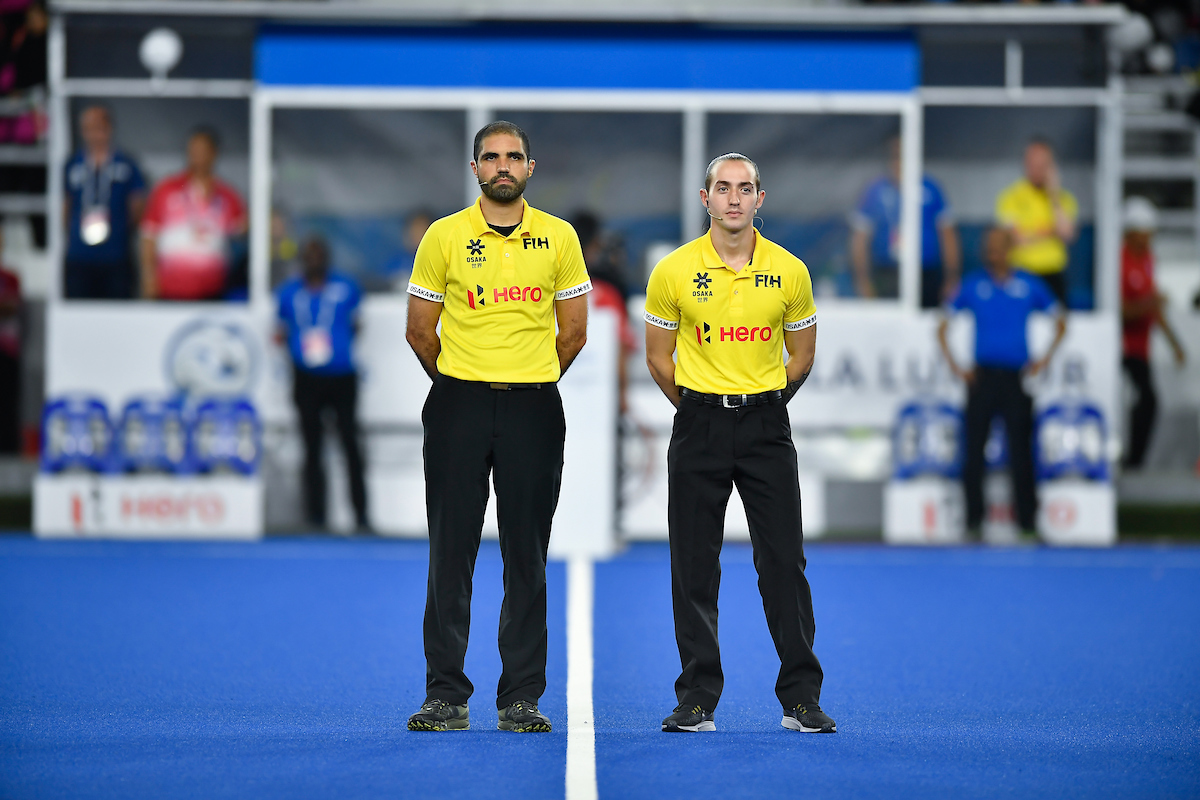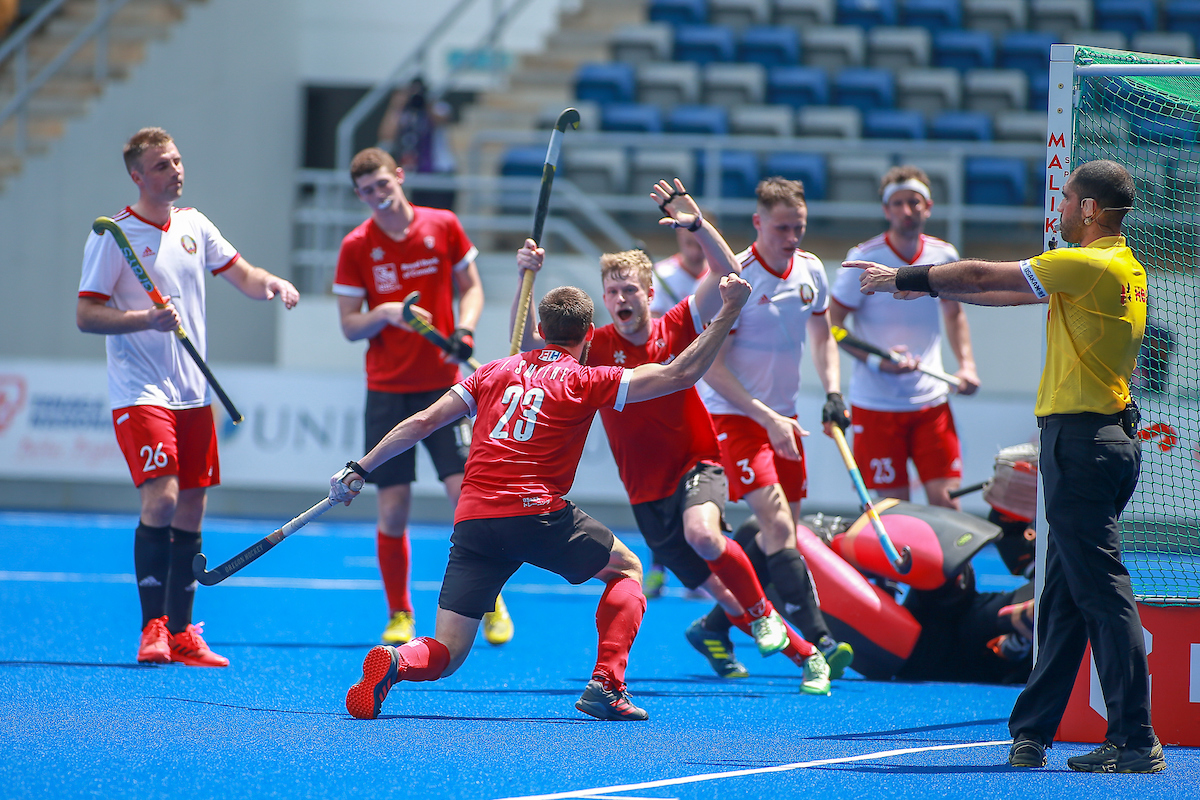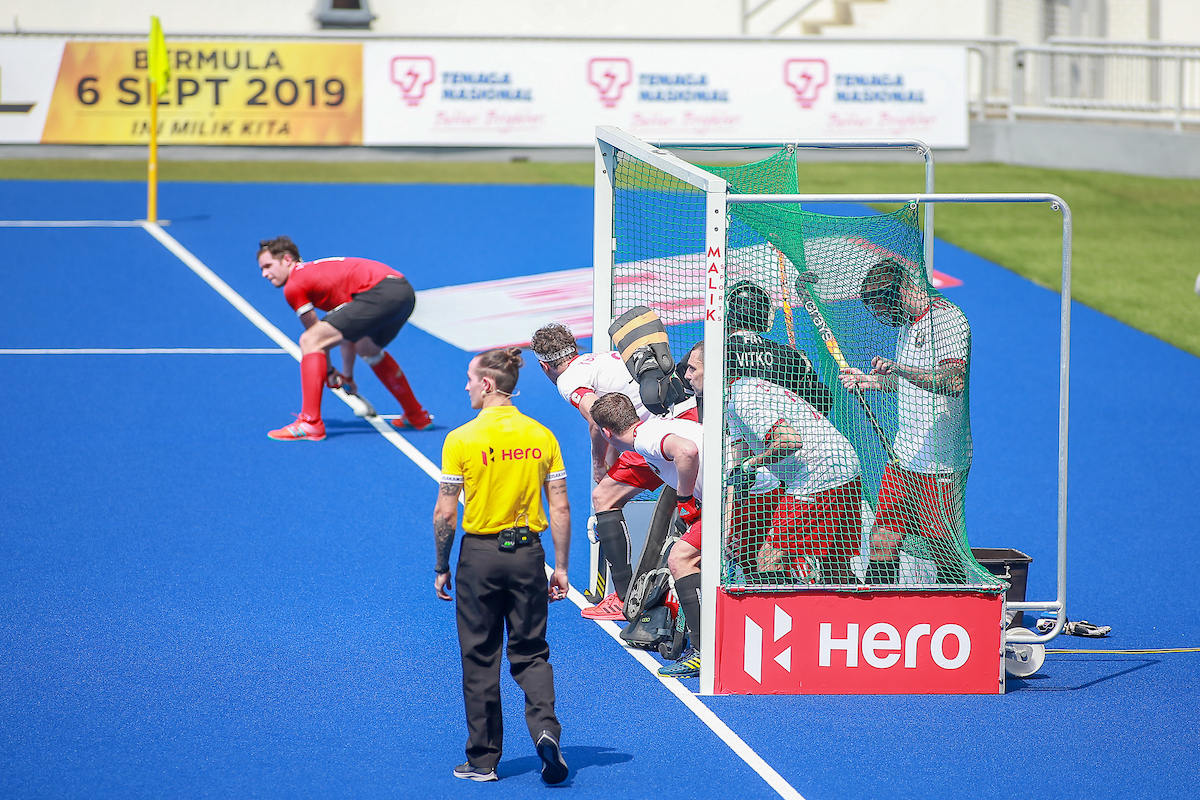
They have also both achieved notable firsts. Garcia, who hails from Uruguay, was the first umpire from outside the ‘PAHF big three’ – Argentina, USA and Canada – to umpire at a top level international competition when he was appointed to the 2018 Champions Trophy in Breda, Netherlands.
Romero, for his part, was the youngest umpire to blow the whistle at the Pan American Challenge in 2015. The Paraguayan was just 18 at the time.
Garcia – who started umpiring in 2002 – first umpired an international in 2012 – a junior Pan Am competition, while that same year Romero was just setting out on his own umpiring career.
During the intervening seven years, things have changed in the world of hockey umpiring. The pace of the game, the fitness of the players, the increased coverage, which gives the spectators unprecedented visibility of every move on the pitch – today’s umpires have to be at the very top of their game.
A high fitness level is an absolute pre-requisite in these quasi-professional days and both Garcia and Romero take their fitness very seriously. At the recent FIH Series Finals in Kuala Lumpur, Malaysia, Romero was to be found every day going through a strenuous exercise regime, despite the sweltering conditions, where temperatures were frequently hitting 40 degrees centigrade. An ability to cope with the extreme conditions in which hockey can be played is as essential to umpires as much as it is the athletes.
In a regular week, Romero trains for two hours a day, six days a week. His training is a mix of kick-boxing, swimming, gym work, running and other varied forms of training. As a sports science student, the umpire is highly knowledgeable about how to get the best performance out of himself, both physically and mentally.
Garcia runs a minimum of three or four days a week, incorporating speed training with endurance. He also does a lot of strength and core training. “I do a lot of training that is similar to tennis training,” he says. “It replicates the rapid change in direction and the change of pace. I work with a personal trainer to ensure my training is as suited to the demands of the sport as possible. And those demands have definitely increased as my umpiring standard has risen.”
It’s not just physical strength that is important. When working in a highly stressed situation such as a top flight hockey match, where a win or a loss could be the difference between qualifying for an Olympics or World Cup, then things can get heated.
“I have learnt over time how to stay calm and move on from any bad decision I might make,” says Romero. “It used to really depress me, I struggled to cope with criticism but now I take it as a learning point and move on."
“It is the same with video referral,” adds Federico. “We know that we cannot always be right. Once we accept that, we can quickly move on. The video is not your enemy, it is your friend. And if you are fit, if you are aware, if you are prepared for the game, then you can enter the field of play and perform with confidence.”
When it comes to preparation, Garcia says he takes learning points from every situation. “It doesn’t matter if it is a low level league match at home or an international game between two high-ranked teams, there will always be something to learn. With a lower league game, I might plan a focal point beforehand and really concentrate upon that during the match.”
One feature of the umpiring preparation that is relatively new is the uptake of technology. Before a contest the umpires will study video clips that highlight certain points within a game. Groups of umpires communicate via WhatsApp or Facebook pages, where they swap information and debate the finer points of decision-making. Then there is the use of video feedback, which both umpires agree is a vital part of the modern game.
“We use the Coach Logic platform,” explains Garcia. It allows you to watch matches and clip and tag the parts of the game that are relevant to us. We do our own tagging for every match. For me, I watch the FIH Pro League on Coach Logic so I can see what those umpires are tagging. That is a very important part of my own development.”
The sorts of things that the umpires, all of whom use the Coach Logic platform for any International Hockey Federation events, are looking for are things such as umpire positioning, the angles they are seeing the action from on the pitch and their interpretation of a passage of play.
“It is important to be able to see where you were positioned and why that may have influenced the way you made a certain decision,” adds Garcia.
The use of video feedback is increasingly important thanks to the advent of the FIH Pro League. Whereas at a tournament, a group of umpires can get together for intense 10-14 day period, with plenty of group discussion, at a single Pro League game only two or three umpires get together for a few days. Here, for umpires, the Coach Logic platform is vital. As Garcia explains: “Not every Pro League match has an umpire manager, so you don’t get feedback at the time. It becomes even more important to get that feedback when you get home.”
Besides the group chat around video clips, any interaction the umpires can get between themselves or with players and coaches is vitally important to development. Romero emphasises this point: “I am a young guy, so I can learn a lot from the other, more experienced people within hockey. On occasions like this [FIH Series Finals] where we are together for intense periods of time, this is a great way to chat formally and informally about the matches.”
One point that is often open for discussion is the difference in playing styles between continents. “Pan Am teams are passionate. Spain and Italy are the same,” says Garcia. “They take a lot of football into the game,” he adds with a smile.
“The management of that is the most important thing for us. It is all about player management. The European teams are very skilful, the Asian teams are very fast. So we might talk to the European umpires about how they deal with three-D skills in the air, while they might ask us about managing players in heated situations or how to handle crowding around the umpire.”
Talking to the two umpires is an opportunity to understand the commitment umpires have towards their own personal development and the burning ambition to join the ranks of the very best. “I want to get to the very top,” says Romero with disarming honesty. “I work at every tournament as hard as I can to get to top.”
Garcia has had a taste of umpiring at the top level through his appointment in Breda. Getting to the Champions Trophy in Breda was amazing. It was the best experience I have ever had as a hockey umpire. It has fed my hunger to keep developing as an umpire.”



